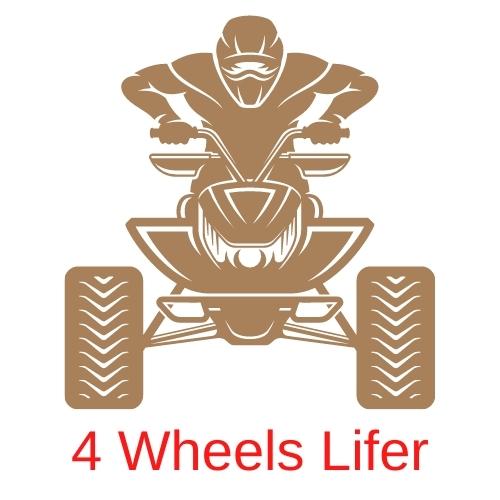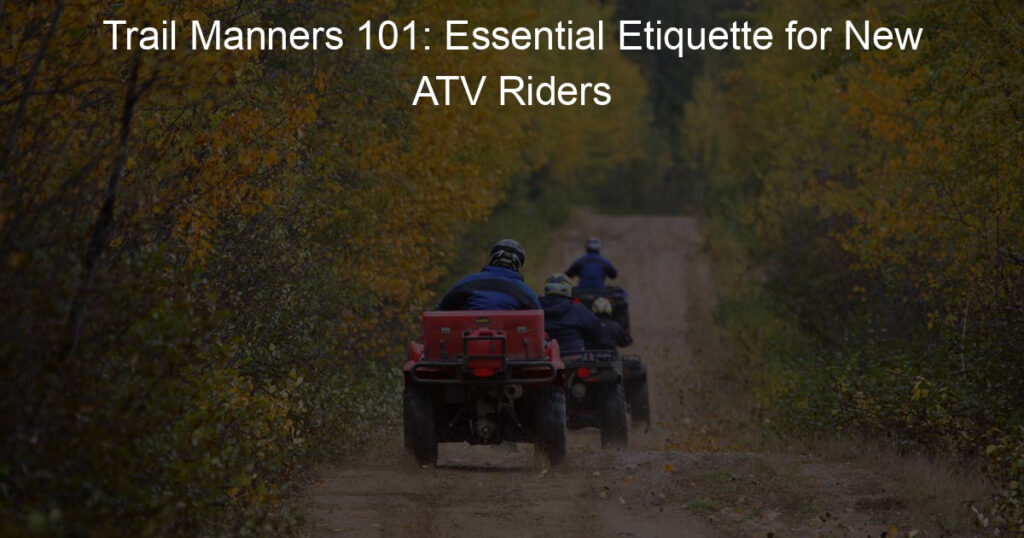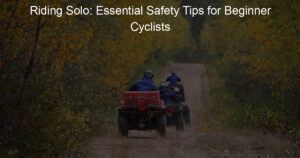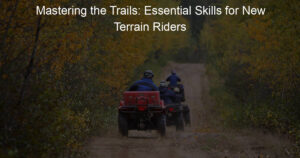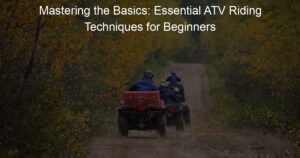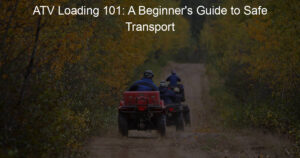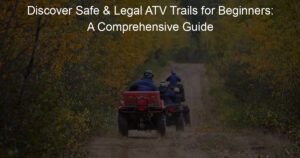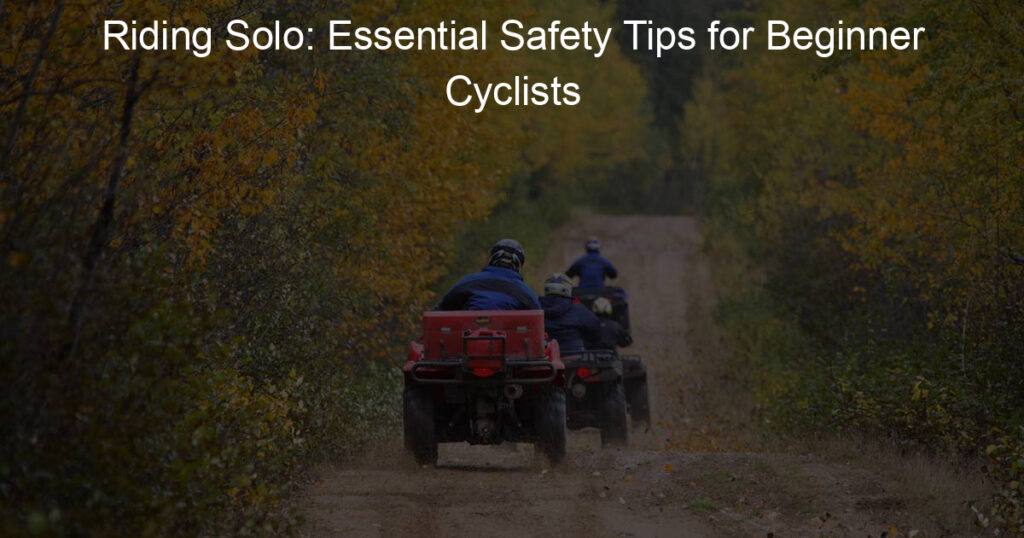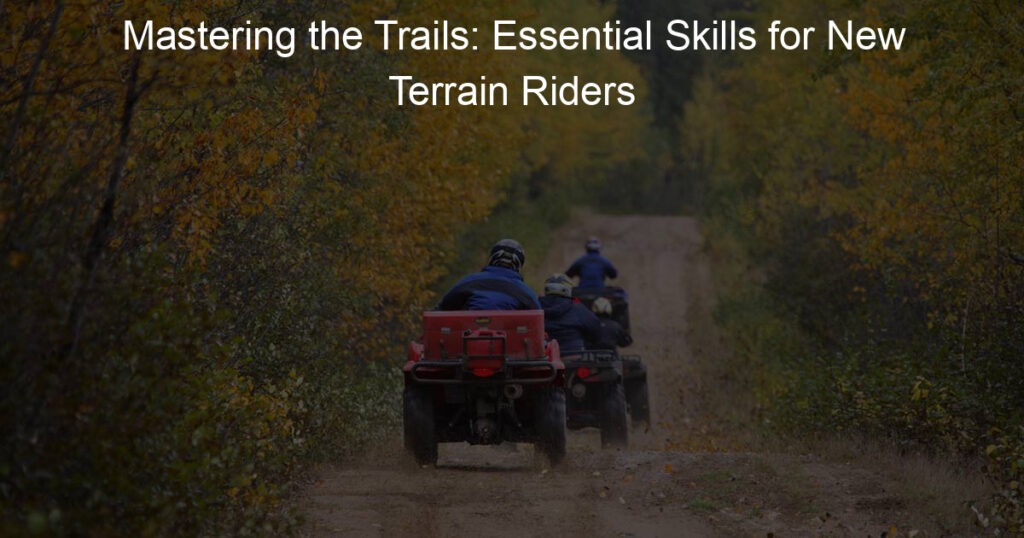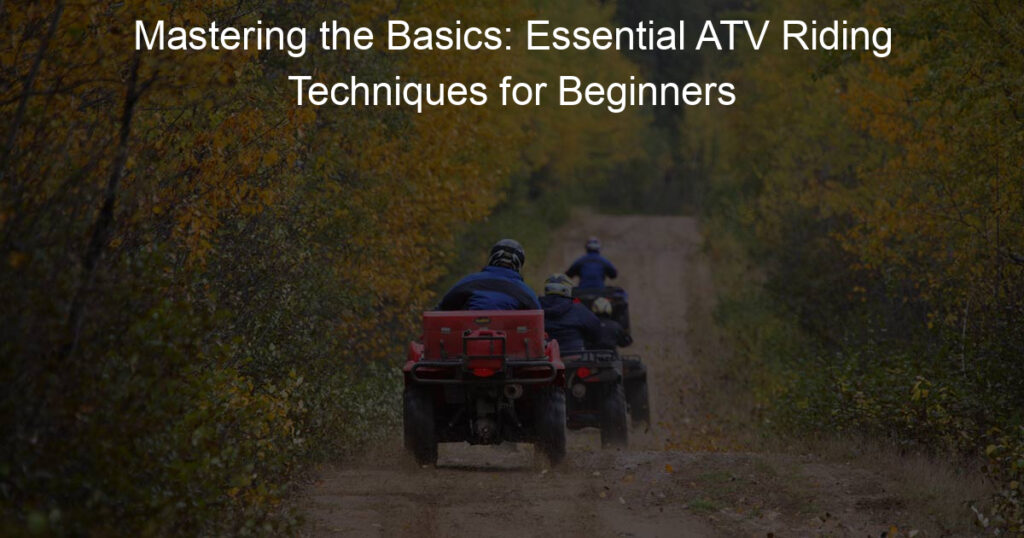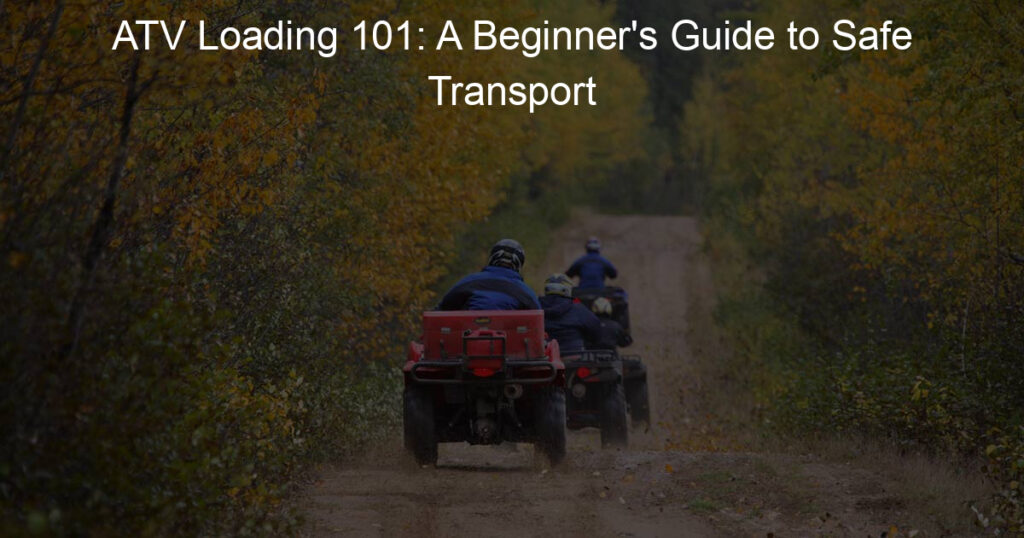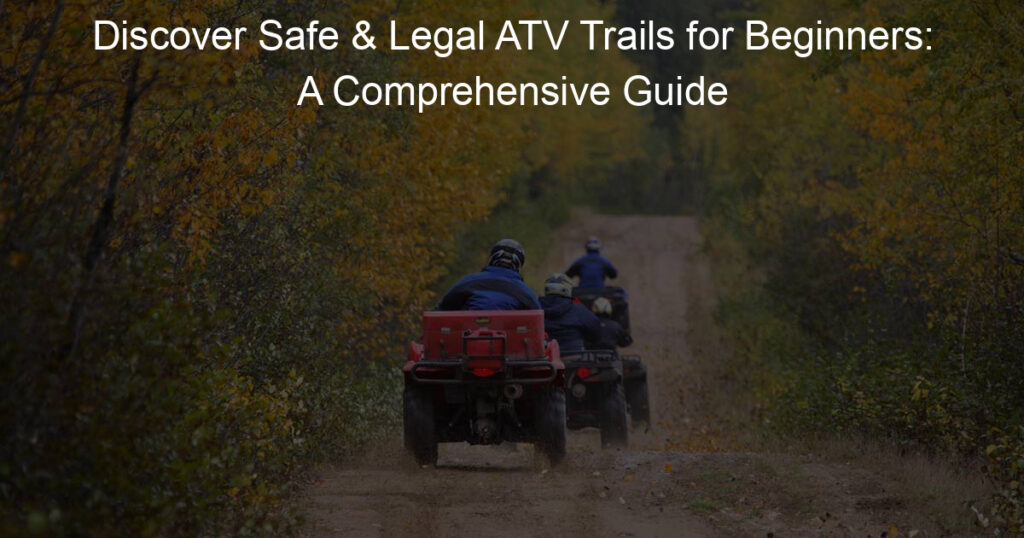
Introduction to ATV Riding Etiquette for Beginners
Welcome to the exciting world of All-Terrain Vehicle (ATV) riding! As a beginner, it’s important to understand that ATV riding is not just about the thrill and adventure. It also requires respect for others and the environment. This is where ATV riding etiquette comes into play.
- Importance of understanding ATV trail manners
- Overview of the article
ATV trail manners are essential for maintaining safety and harmony on the trails. These manners are a set of rules and guidelines that every ATV rider, whether beginner or experienced, should follow. They ensure that everyone can enjoy the trails without causing harm or inconvenience to others or the environment.
In this article, we will guide you through the basics of ATV riding etiquette. We will start with a beginner’s guide to understanding ATV riding, followed by essential ATV trail rules for new riders. We will also share some practical riding tips for beginners and illustrate these points with real-life case studies. Finally, we will conclude with the importance of ATV riding etiquette. So, let’s embark on this exciting journey!
Remember, ATV riding is a fun and exhilarating activity, but it also requires responsibility. By understanding and practicing proper ATV riding etiquette, you can ensure a safe and enjoyable experience for everyone on the trails. So, buckle up and let’s get started!
Understanding ATV Riding: A Beginner’s Guide
If you’re new to the world of outdoor sports and adventures, you might be wondering about ATV riding. This guide will help you understand what ATV riding is and why it has become so popular.
What is ATV Riding?
ATV stands for All-Terrain Vehicle. As the name suggests, these are vehicles designed to handle a wider variety of terrains than most other vehicles. ATV riding refers to the act of driving or riding these vehicles.
- Definition and explanation of ATV riding: ATV riding is a recreational activity that involves navigating an all-terrain vehicle, often over rough, off-road landscapes. These vehicles can have three, four, or even six wheels, and are designed for single riders, though some models can accommodate a passenger. The rider sits on and operates these vehicles much like a motorcycle, but the extra wheels give more stability at slower speeds. ATV riding can be a fun and exhilarating way to explore the outdoors, but it also requires skill and safety awareness.
- Popularity and growth of ATV riding: Over the years, ATV riding has grown in popularity. According to the Outdoor Industry Association, nearly 35 million Americans participated in ATV riding in 2019. This growth can be attributed to the thrill and adventure that ATV riding offers, as well as its accessibility. Many national parks, forests, and trails across the country allow ATV use, making it a popular choice for outdoor enthusiasts. The growth of ATV riding has also led to the development of numerous ATV parks and trails, further increasing its popularity.
Now that you have a basic understanding of what ATV riding is and its growing popularity, you can start exploring this exciting outdoor activity. Remember, safety should always be your top priority when ATV riding. In the next section, we’ll discuss the importance of ATV riding etiquette.
Why is ATV Riding Etiquette Important?
ATV riding etiquette is not just about manners, it’s about safety and respect. Let’s delve into why it’s so crucial.
- Importance of Safety Guidelines
- Respect for Other Riders and the Environment
ATV riding can be a thrilling adventure, but it can also be dangerous if safety guidelines aren’t followed. These guidelines are designed to protect you, the rider. They include wearing appropriate safety gear, riding at a safe speed, and never riding under the influence of alcohol or drugs. According to the Consumer Product Safety Commission, there were an estimated 93,800 ATV-related, emergency department-treated injuries in the United States in 2017. This statistic highlights the importance of adhering to safety guidelines to prevent accidents and injuries.
ATV riding etiquette also involves showing respect for other riders and the environment. This means not disrupting other riders with reckless behavior or excessive noise, and not damaging the environment by riding off designated trails. The National Off-Highway Vehicle Conservation Council states that “Responsible riders are those who respect the rights of others in the outdoors, including non-motorized recreationists.” This respect helps maintain a positive image for the ATV riding community and ensures the trails remain open and enjoyable for everyone.
In conclusion, ATV riding etiquette is important because it promotes safety and respect. By following the guidelines and showing consideration for others and the environment, you can help ensure a positive experience for all ATV riders.
Essential ATV Trail Rules for New Riders
As a new rider, understanding and following the essential ATV trail rules is crucial for your safety and the safety of others. These rules also ensure that everyone can enjoy the trail without any disruptions. Let’s dive into the basic ATV trail conduct that every rider should know.
Basic ATV Trail Conduct
Basic ATV trail conduct revolves around three main principles. These are:
- Respecting trail signs and markers:
- Keeping to the right:
- Yielding to uphill traffic:
Trail signs and markers are there for a reason. They guide you on the right path, warn you of potential dangers, and inform you about the trail’s conditions. Ignoring these signs can lead to accidents and damage to the trail. Therefore, always respect and follow the instructions on the trail signs and markers.
Just like on the road, it’s important to keep to the right when riding on an ATV trail. This rule ensures smooth traffic flow and prevents collisions with oncoming riders. Remember, the trail is for everyone’s enjoyment, so keep to the right and allow others to pass safely.
When you encounter other riders on a slope, the general rule is to yield to uphill traffic. Riding uphill requires more effort and maintaining momentum is crucial. If you’re going downhill, it’s easier for you to stop and let the uphill riders pass. This rule helps to prevent accidents and maintain a smooth flow of traffic on the trail.
In conclusion, respecting trail signs, keeping to the right, and yielding to uphill traffic are the basic ATV trail conduct rules that every new rider should know and follow. By adhering to these rules, you’ll ensure your safety and the safety of others, as well as preserve the trail for future enjoyment.
Off-road Etiquette
When venturing off-road on your ATV, it’s crucial to follow certain etiquette rules. These rules not only ensure your safety but also protect the environment and wildlife. Let’s delve into some of these key points.
- Minimizing Noise
- Respecting Wildlife
- Leaving No Trace
ATVs can be noisy, and this noise can disturb both wildlife and other people enjoying the outdoors. Always try to minimize the noise your ATV makes. This can be done by maintaining your vehicle properly and avoiding unnecessary revving of the engine. Remember, the goal is to enjoy nature, not to disrupt it.
While riding, you may encounter various types of wildlife. It’s important to respect their space and not disturb them. Avoid chasing or scaring animals, and keep a safe distance. Remember, you’re in their home, and it’s your responsibility to behave respectfully.
The principle of “Leave No Trace” is a cornerstone of outdoor ethics. It means you should leave the environment exactly as you found it. Don’t litter, and if you see trash, pick it up. Stay on designated trails to avoid damaging plants or causing soil erosion. When you leave, there should be no sign that you were ever there.
By following these off-road etiquette rules, you can ensure a positive experience for yourself and others, while also protecting the environment and wildlife. Remember, the goal of ATV riding is not just about the thrill, but also about appreciating and respecting nature.
ATV Riding Tips for Beginners
ATV riding is an exciting outdoor activity that offers a unique blend of adventure and skill. As a beginner, it’s essential to understand the basics of ATV riding to ensure a safe and enjoyable experience. Here are some crucial tips to help you prepare for your first ATV ride.
Preparation Before Riding
Before you hit the trail, there are two key areas you need to focus on: checking your ATV and wearing appropriate gear. These steps are crucial to ensuring your safety and the longevity of your ATV.
- Checking the ATV
- Wearing Appropriate Gear
Before you start your ride, it’s essential to check your ATV thoroughly. Ensure the tires are properly inflated and have no punctures. Check the brakes to make sure they’re working correctly. Look at the oil and fuel levels, and make sure the headlights and taillights are functioning. This step is crucial to prevent any mechanical issues while you’re on the trail.
ATV riding can be a risky activity if not done with proper safety measures. Wearing appropriate gear is one of the most important safety measures you can take. This includes a helmet, goggles, long sleeves, long pants, over-the-ankle boots, and gloves. This gear will protect you from potential injuries and the elements.
Remember, preparation is key to a safe and enjoyable ATV riding experience. By checking your ATV and wearing the right gear, you’re setting yourself up for a successful ride.
While on the Trail
Once you’re out on the trail, there are two key things to remember to ensure a safe and enjoyable ride. These are staying on designated trails and practicing safe speeds.
- Staying on Designated Trails
- Practicing Safe Speeds
Staying on designated trails is not just a rule, but it’s also a way to protect the environment and the trails for future riders. When you ride off the trail, you can damage plants, disturb wildlife, and cause soil erosion. According to a study by the U.S. Department of Agriculture, it can take up to 100 years for a trail to recover from the damage caused by off-trail riding.
Staying on the trail also keeps you safe. Trails are designed with rider safety in mind. They are cleared of dangerous obstacles, and their turns and slopes are calculated to be manageable for riders. When you go off-trail, you’re putting yourself at risk of accidents.
Practicing safe speeds is another crucial aspect of ATV riding. It’s easy to get carried away and want to go fast, but it’s important to remember that safety comes first. According to the Consumer Product Safety Commission, speed is a factor in many ATV accidents.
When you’re on the trail, keep your speed at a level where you can easily control your ATV. This means being able to stop quickly if you need to, and being able to navigate turns without tipping over. Remember, the trail is not a racetrack. It’s a place to enjoy nature and the thrill of riding.
To sum up, while on the trail, it’s crucial to stay on designated paths and maintain safe speeds. These practices not only ensure your safety but also help preserve the trails for future riders. Remember, ATV riding is not just about the thrill, but also about respecting the environment and other riders.
Case Studies: ATV Trail Manners in Practice
Let’s take a look at two real-life examples that show the importance of good trail manners when riding an ATV. These case studies will help us understand the positive impact of good trail etiquette and the consequences of poor trail manners.
- Case study 1: Positive impact of good trail manners
- Case study 2: Consequences of poor trail etiquette
Meet John, an ATV enthusiast who loves exploring trails in his local area. John always makes sure to follow the ATV trail rules. He respects other riders, never leaves trash behind, and always stays on the designated trails. His good trail manners have not only earned him respect among the ATV community, but also helped preserve the natural beauty of the trails.
According to a survey conducted in his local ATV club, 90% of the members agreed that the trails were in better condition and more enjoyable to ride on because of the good trail manners practiced by riders like John. This case study shows that good trail manners can have a positive impact on the ATV riding experience for everyone.
Now, let’s talk about Mike. Unlike John, Mike often ignores the trail rules. He rides off the designated trails, leaves trash behind, and doesn’t respect other riders. His poor trail manners have led to several problems. The trails have started to erode due to his off-trail riding, and the trash he leaves behind has harmed the local wildlife.
Because of Mike’s actions, the local ATV club had to spend extra money to repair the trails and clean up the trash. Moreover, some members have stopped using the trails because of the poor conditions. This case study clearly shows the negative consequences of poor trail etiquette.
In conclusion, these case studies highlight the importance of good trail manners when riding an ATV. By following the trail rules and respecting others, we can ensure a better riding experience for everyone and help preserve the natural beauty of the trails.
Conclusion: The Importance of ATV Riding Etiquette
As we wrap up this comprehensive guide on ATV riding etiquette, it’s essential to reflect on the key points we’ve discussed. ATV riding is not just about the thrill and adventure; it’s also about respecting others and the environment. Let’s recap our main takeaways and encourage all new ATV riders to practice good trail manners.
- Recap of key takeaways:
- Encouragement for new ATV riders to practice good trail manners:
ATV riding etiquette is a crucial part of the riding experience. We’ve learned that it’s important to respect other riders, pedestrians, and the environment. We’ve also discussed the essential ATV trail rules for new riders, such as staying on designated trails, not exceeding speed limits, and respecting wildlife. Additionally, we’ve shared some practical ATV riding tips for beginners, like wearing the right gear and maintaining your ATV properly. Finally, we’ve looked at real-life case studies that highlight the importance of good trail manners.
To all new ATV riders, remember that your actions on the trails can significantly impact others and the environment. Practicing good trail manners is not just about following rules; it’s about fostering a culture of respect and responsibility. So, as you embark on your ATV riding journey, make it a point to adhere to the etiquette we’ve discussed in this guide. Remember, a great rider is not just skilled, but also respectful and considerate. Happy riding!
ATV riding is a thrilling activity that offers a unique way to explore the outdoors. But, it’s also a responsibility. By practicing good ATV riding etiquette, we can ensure a safe, enjoyable, and respectful experience for everyone on the trails. So, let’s all do our part and ride with respect.
